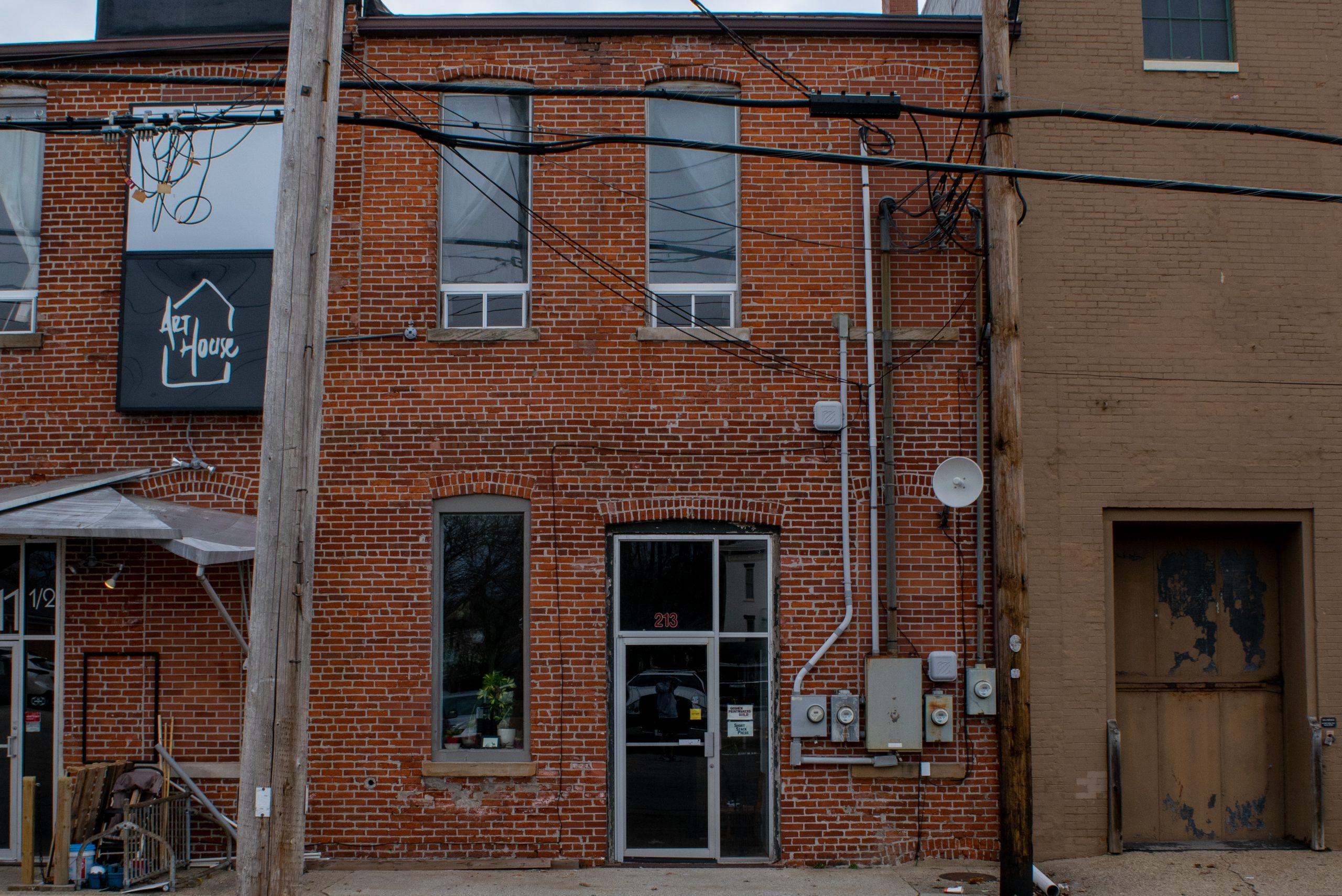The Goshen Printmakers Guild can be hard to find on a first visit. Tucked in an alleyway between the Art Store and Fables Books in downtown Goshen, the shop’s only sign is a 3×5-inch index card taped to the inside window of the door.
Inside, the studio is bright and well lit. Brick walls encapsulate numerous presses and tables, with huge workbenches holding sets of letters in different fonts. Upbeat, modern voices like Lauryn Hill and Lil Nas X ring in the air, and Ida Short, the guild’s ever-enthusiastic caretaker, greets visitors in an apron.There are eight or nine presses in total — Short has trouble keeping count. One of them, a Vandercook press, is owned by the Goshen College English Department; another is actually a perforating machine which is used to create little perforations in papers, such as those on sheets of stamps.
What does Short do with her printing presses? Commercial work such as custom stationery, business cards, wedding invitations, and RSVPs take up about half her time, jobs that are necessary to keep the shop running. Short’s true passion, however, is her community work.
“The other 50% of my time I spend organizing community events, working on my own art projects, collaborating with local artists,” Short said. “People coming in and using the space has been really cool to see.”
Short graduated from Goshen College with a degree in printmaking. After moving away and joining a printing co-op, she returned to Goshen and acquired her first printing press in 2020.
She wished to establish some type of printing coalition in Goshen, “because print-making has a high barrier to entry depending on what kind you’re doing,” she explained.
“You need equipment. You need room to store it. You need to maintain it.”
In medieval times, the word guild was used to describe a coalition of craftsmen working in the same field. It’s a good description of Goshen Printmakers: the studio provides space for the artistic, intricate process of printmaking to flourish.
The name “guild” hearkens back to an age where manual printing presses were necessary for print media to exist. Nowadays, digital printing and media has rendered old presses somewhat obsolete. Maintaining her presses has been a difficult, involved endeavor for Short, stretching her skills beyond artistry.
“So much of my time is taken up with maintenance; I feel like I am a part time mechanic,” Short said. “When you are the only person in the studio and something goes wrong, you have to figure out how to fix it. It’s a category of things that isn’t really on the internet, so you’re blindly calling people.”
In an increasingly digital world, how can printing presses remain relevant? Why should printing press preservation be prioritized?
Short hosts groups for field trips and demonstrations, including numerous GC classes. Jessica Baldanzi, a GC English professor, has greatly appreciated the unique perspective printing provides — her memoir class will be visiting in the near future.
“The way that [printing works] forces you to be very efficient with language, to experiment a little,” Baldanzi said.
Learning about printing helps students see “the art of how [writing] goes on the page rather than just printing it.” Baldanzi continued, “It makes you look at the language differently.”
Exhibiting and viewing words in varying physical contexts provides a certain feel for the language of a piece that is hard to describe unless you try it out.
“I’m not a leadite; I’m not anti-computer,” Baldanzi said. “I just think it’s important as a writer to work in as many different mediums as you can.”




